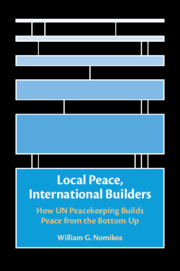Book contents
- Frontmatter
- Contents
- Figures
- Tables
- Preface
- Acknowledgments
- Part I Localized Peace Enforcement Theory
- Part II Applying the Theory to a Case Study: Mali
- 5 Introduction to Ethnic Conflict and International Intervention in Mali
- 6 Individual Peace
- 7 Communal Peace
- Part III Implications for Academics and Policymakers
- References
- Index
5 - Introduction to Ethnic Conflict and International Intervention in Mali
from Part II - Applying the Theory to a Case Study: Mali
Published online by Cambridge University Press: 02 January 2025
- Frontmatter
- Contents
- Figures
- Tables
- Preface
- Acknowledgments
- Part I Localized Peace Enforcement Theory
- Part II Applying the Theory to a Case Study: Mali
- 5 Introduction to Ethnic Conflict and International Intervention in Mali
- 6 Individual Peace
- 7 Communal Peace
- Part III Implications for Academics and Policymakers
- References
- Index
Summary
This chapter begins the second part of the book, which tests the main empirical implications of localized peace enforcement theory using data from Mali, a land-locked country in West Africa. Though Mali experienced three coups, a separatist civil war, and an Islamist extremist insurgency from 2012 to 2024, no source of conflict has been more fatal or detrimental to Malian society than communal violence. The chapter starts by providing a very brief history of identity-based conflict in the country. It also places Mali within a broader historical context and demonstrates that its experience of interethnic tensions is representative of countries with colonial legacies. The chapter then draws on detailed interviews with forty-eight local leaders to describe what communal violence and peacekeeping look like in Mali from the residents’ perspective. Given the theoretical importance domestic perceptions of peacekeepers, these interviews offer crucial insights into the plausibility of localized peace enforcement theory. There are distinct advantages of studying the Malian case, which the chapter describes in a brief overview of international interventions by the UN and France from 2012 to 2024.
- Type
- Chapter
- Information
- Local Peace, International BuildersHow UN Peacekeeping Builds Peace from the Bottom Up, pp. 115 - 134Publisher: Cambridge University PressPrint publication year: 2025
- Creative Commons
- This content is Open Access and distributed under the terms of the Creative Commons Attribution licence CC-BY-NC 4.0 https://creativecommons.org/cclicenses/

